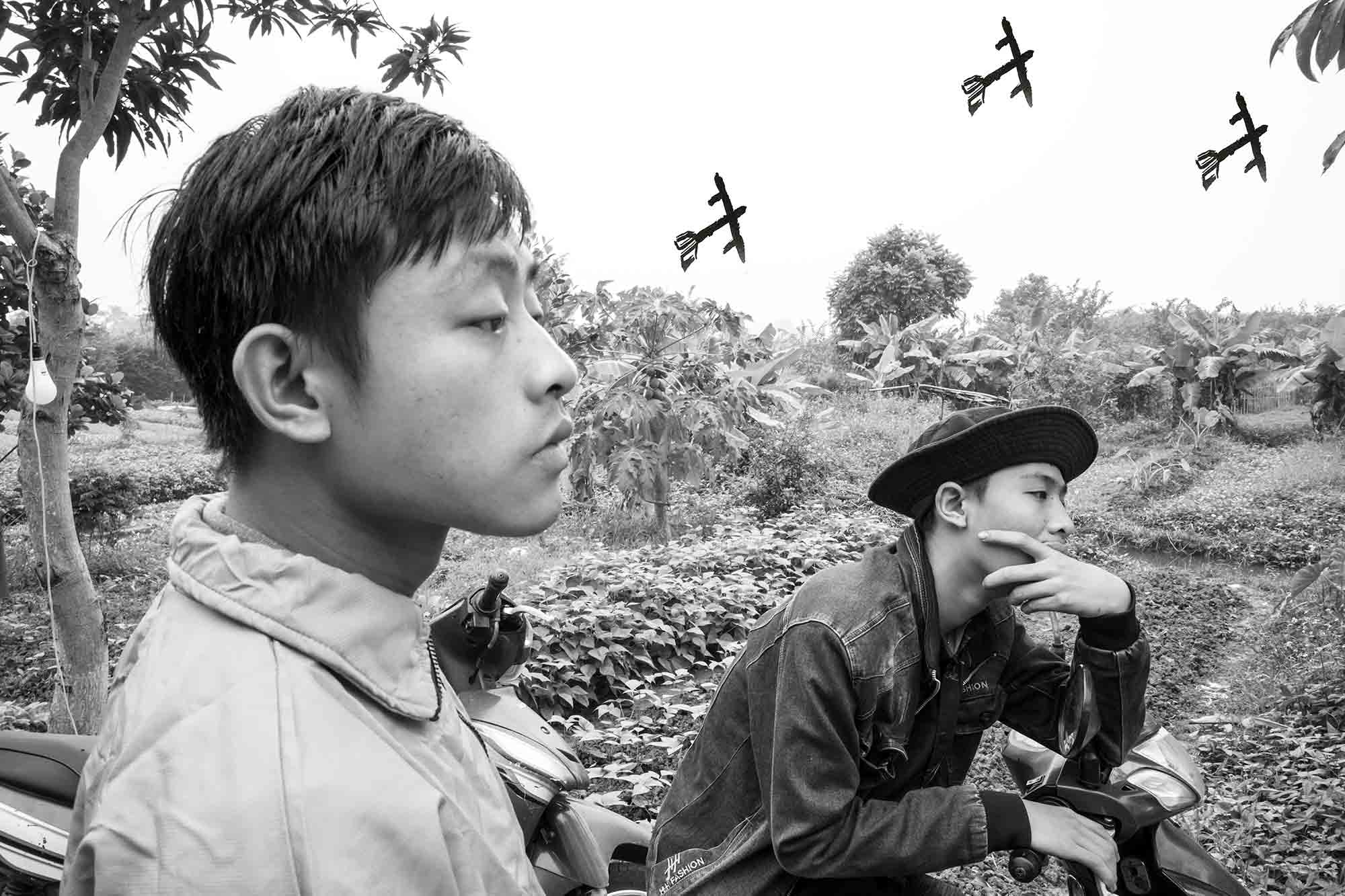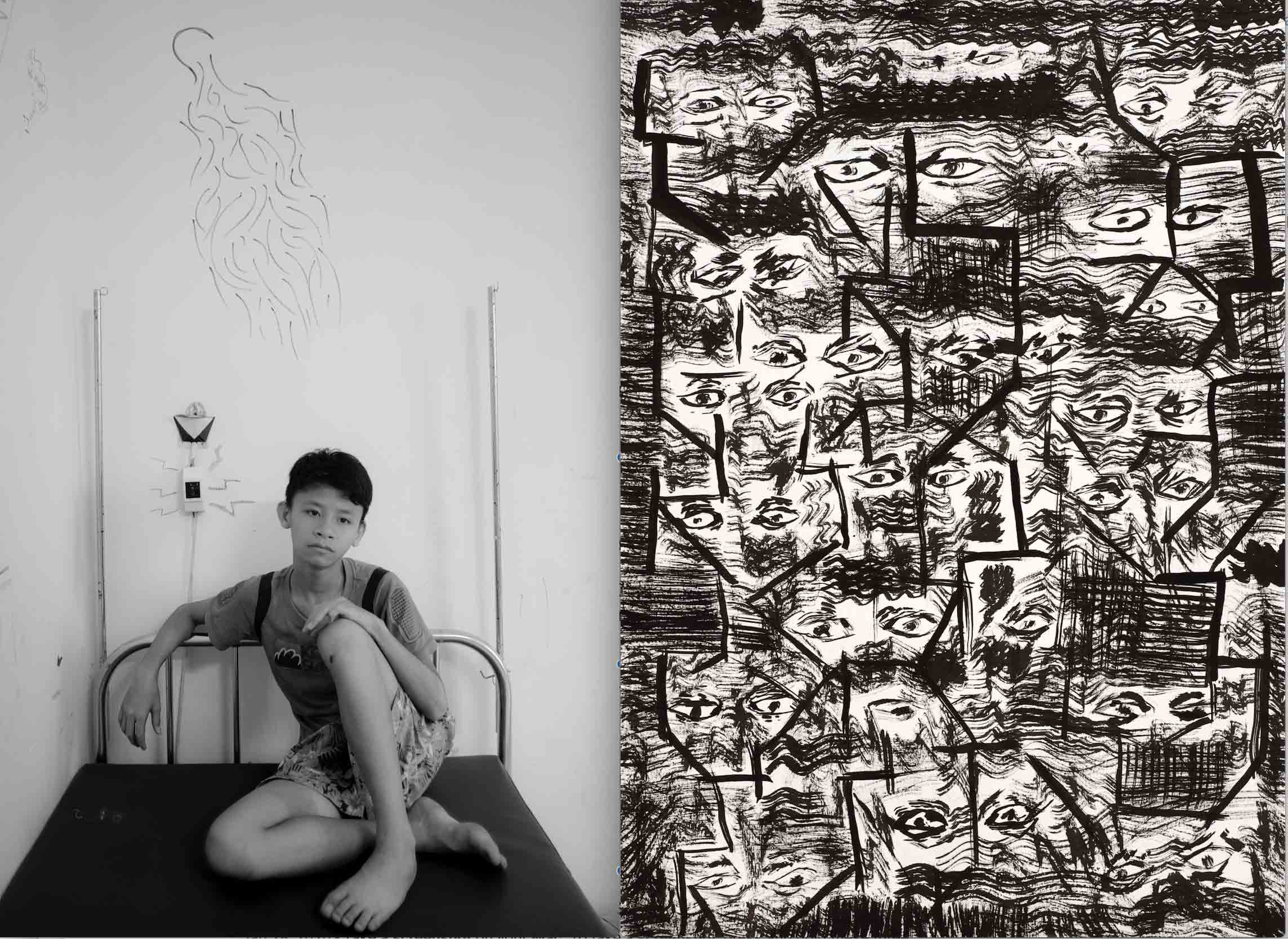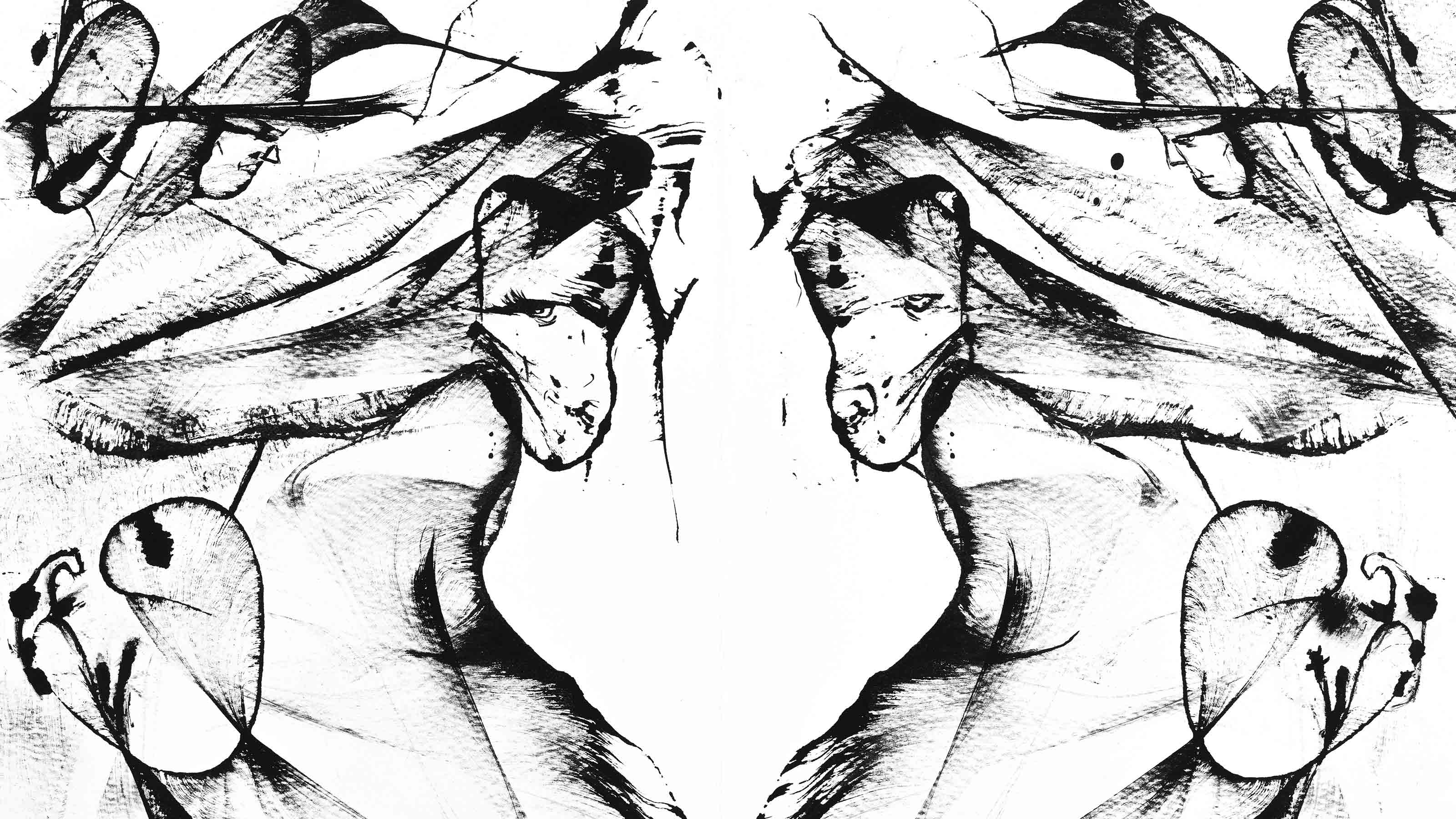Forty-five years have passed since the end of the Vietnam War, and there’s no dearth of written and film documentaries on the conflict. Less common, perhaps, are works that offer artistic impressions of those directly affected. In Long Time No See, an exhibition that ended earlier this year after a three-month run at the Vincom Center for Contemporary Art in Hanoi, video artist Andrea Orejarena ’17 and photographer Caleb Stein ’17 offered visitors a new way to reflect on the legacy of the conflict, known in Vietnam as the “American War.”
Created in partnership with Vietnamese veterans and young people who bear the legacy of exposure to chemical weapons, the artists acted as collaborators rather than “authors” of the work. In the video installation portion of the multimedia exhibition, veterans were invited to interpret their wartime experiences through visual imagery based on free association. The images were then integrated using green-screen technology and animation, and accompanied by haunting instrumental music by The Six Tones, a Vietnamese-Swedish group.

The results are striking. In one scene, an older man rests peacefully on a bed of clouds. “This veteran was stationed on a mountain during the war,” Stein explains. “It was his job to guard the camp at night where it was so foggy that at times it felt like he was sleeping above the earth.”
In another highlight from the video, a veteran facing the camera calmly contemplates the viewer on one screen, while additional screens show swallows flying in formation with frequent changes in direction. “This image grew out of conversations with Vietnamese veterans about the benefits and pitfalls of functioning as a collective,” says Orejarena. “On the one hand, there can be productivity and cohesion in collective living, and on the other hand, this way of relating to one another can lead to uncritical consumption of narratives written by those in positions of power.”
Complementing this portion of Long Time No See are still photographs of young people that depict moments of introspection and vulnerability, as well as an invitation to connect. Elements of drawing and painting are also included, either as part of the environment, markings drawn on photographs, or as individual works of art on paper. In a photo of a young boy seated on an institutional bed, a ghost drawn directly on the wall appears to float above him.

Orejarena and Stein met the young people at Làng Hữu Nghị, a boarding school and residence, when they started an arts workshop on the premises. The facility also hosts veterans for a month at a time while they receive medical care in Hanoi. Orejarena, who is originally from Colombia, and Stein, who is British, first learned about Làng Hữu Nghị during their junior semester abroad. After graduation, Stein says, “we couldn’t shake that experience so we made plans to return, to have some sort of visual exchange to explore the memory of that war.” They also wanted to “challenge the war’s dominant western-centered historical narrative in the United States.”
Relationships with both groups of residents took some time to develop and the artists describe many conversations over many cups of tea. The two found that their own status as immigrants to the United States allowed the veterans and young people to speak more freely than they might otherwise have done.

With no Vietnamese language skills of their own, the two relied on a translator during conversations with the veterans. But many of the young people they worked with were deaf, part of the war’s legacy, so Orejarena and Stein learned Vietnamese sign language, a means of communication that eventually yielded the name of their exhibition. Upon returning from a trip outside the country to renew their visas, the artists were greeted with a gesture that Orejarena describes as beautiful and dance-like, one that meant “long time, no see.”
Reflecting on their artistic process, Orejarena and Stein, who are partners in their personal as well as their professional lives, found that the best way to work was to “blur the lines” between their respective art forms, as each engaged with the other’s medium. “We just made it about the work,” Stein says. Although they have no immediate plans to do so, the couple hope to bring Long Time No See elsewhere. In the meantime, after spending two years in Vietnam, they look forward to their next collaboration: an American road trip.
